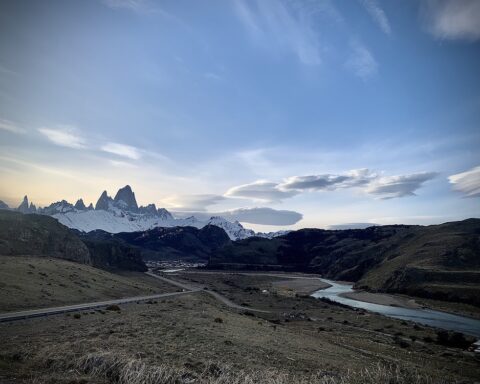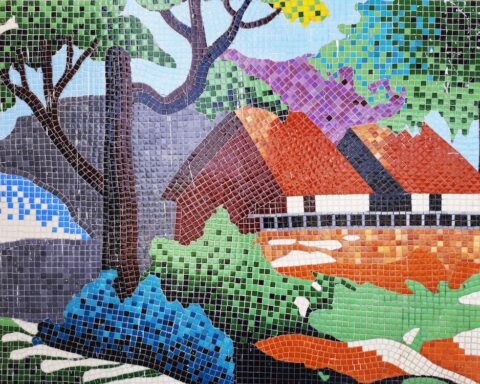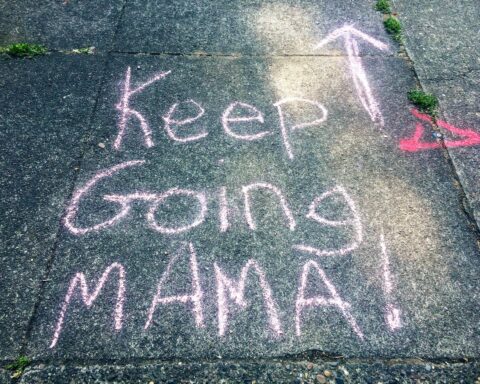The Pacific Northwest: A childhood in nature
The American West has been in a drought for nearly two decades, or almost the entirety of my conscious years. Scientists deem it a megadrought, the worst one in twelve hundred years. Even now, the smell of wildfire smoke brings nostalgic memories of my childhood, and I feel that summer truly starts only once the fires have begun. I’ve been away from my west coast for almost ten years now and with each year, the wildfires increase in intensity; even three thousand miles away in New England I am greeted some mornings by the remnants of these fires. These smoky summer days still powerfully remind me of home, but also bring sadness, as they are a reminder that the beautiful spaces of my childhood are no more.
My primary years were spent at a Montessori school in which nature adventures were an integral part of the curriculum. The playground of my Washington state elementary school encompassed part of a small forest and most of my recess hours were spent amongst the trees. Every year, we took a weeklong camping excursion to Olympic National Park to identify plants and animals, measure the pH levels of rivers, and learn about ideal composting practices to produce the king of dirt: “black gold.” In spring, we collected salmon eggs from the local fishery, raised them in a tank, charted their growth, cried a little at those little salmon who could not make it past the first few stages of life, and, when they were old enough, released them into the river so they could make their perilous journey out to the sea, just to begin the cycle all over again. I am forever grateful for these formative years in which we were encouraged to be curious about nature, rather than view ourselves as being separate from it. But I grew up, as all children do, and when I entered the “adult world,” I was surprised to discover that despite its centrality to nearly every global and social issue, environmental awareness is not more at the forefront of every organization. In fact, in my years at music school, it bothered me to find how many people did not seem to care about the environment at all.











photos by the author, taken throughout the Pacific Northwest
Seattle and Boston: Reconciling classical music and environmentalism
I am a classical musician. I am also an environmentalist — at least as much as one can be in a world inundated with plastic, electronics, capitalistic culture, and a dominating industrial-military complex. My goal is not “to do environmentalism” perfectly, but to do it in some capacity, as best as I can, every single day. I am now trying to find the balance between these two identities of mine which are seemingly ever at odds with each other. This struggle began during my undergraduate music studies in Seattle when I felt more strongly than ever the existential threat of the current climate crisis. I disliked that the expectations within a classical music education setting led many students to disconnect themselves from the outside world, to spend time in the practice room to refine artistic skills just to have a small chance at winning a prestigious job. To sacrifice personal joy and exploration in areas outside of music to achieve success in music, supposedly one of the most fulfilling of all pursuits, made little sense to me. Meanwhile, the world was burning, and I was losing chances to see what was left of it. What I was doing seemed extremely frivolous, and I often found myself thinking I should have devoted my intellect to something more tangibly helpful for the world.
Perhaps it is simply the nature of training as a classical musician at the collegiate level, but no one in my university cohort seemed to be worried, at least outwardly, about what was happening out there, outside of our “safe” little world of practice rooms and theory classes and concert halls. Conversations centered around this masterclass, that music festival, who won a job, who did not win a job, and what that meant for our future if even the best musicians weren’t winning jobs. In some day-to-day conversations, people might say “Oh isn’t it too bad what’s happening to our planet?” and leave it at that, as if their one and only home weren’t also burning down as they spoke. Bring up the most beautiful concert halls in the world or which famous orchestra would be coming to town and the conversation could flow indefinitely, as if we did not have a cathedral of beautiful pines and firs and spruces in the mountains in our backyard. As if we did not have all the sounds of nature to inspire us in our music-making. As time went on, I found that I had begun to distance myself from most of my musical peers. These conversations and connections no longer intellectually stimulated me, and I could no longer, in good conscience, pretend that everything was okay.
Napa Valley: The destructive elitism of summer festivals
Many young musicians are encouraged to boost their resumés by participating in competitions and summer music festivals which, ironically, particularly epitomize this dystopian disconnect. Funded by wealthy patrons and set in stunning locations, festivals thrust environmental issues onto center stage. Some years ago, I performed as part of a festival in Napa Valley, a place so wealthy and safe that no one need lock their doors at night. It is also a place so financially inaccessible that had it not been for this summer festival, I would have never set foot there. Concertgoers might pay up to $3,000 per ticket, an unthinkable sum of which the student musicians unbelievably received none. And we all sat together — the poor musicians and the wealthy elite — against the backdrop of a blood red setting sun, pigmented so because of smoke particles from six fires that swallowed Yosemite that summer. And everything seemed so wrong about that experience — that someone could pay so much money to attend that concert, that we musicians scrambled to grasp this unpaid experience to develop our skills, and that we all sat willingly together in that pollution, shortening our lifespans. At that moment, if I could have taken our entire capitalistic world and thrown it into the conflagration at Yosemite, I would have.
The elite, today’s primary consumers and sponsors of classical music (apart from classical musicians themselves), are often impacted least and last by any global catastrophe. They are insulated by their money, having the means to access health care, to escape, to rebuild, and to start over following a natural disaster. Wealth determines your zip code, putting you at an advantageous distance from chemical pollution, flooding, or other disasters. Climate change continues to widen the wealth gap, exacerbating social and racial inequality and civil unrest.[1] Darwin’s most iconic work On the Origin of Species is often mistakenly summarized into one phrase: “survival of the fittest.” Reflecting an unfortunate selfish and predatory mentality, this phrase has evolved into the twenty-first century motto: “survival of the wealthiest.” We as humans have lost the understanding of evolution as “survival of the most adaptable,” and thus continue to think of ourselves as separate from, even above, nature.





photos by the author, taken at Yosemite
New England: Learning to play for the trees
I have been fortunate to have mentors in my musical life who took the time to guide my understanding about music’s relationship to the world and to tangible social and environmental issues. Perhaps the most influential of these mentors is Paula Robison, well-known in classical music circles as an eccentric performer and embodying what I view to be a near-symbiotic relationship with her natural environment. The academic year at New England Conservatory always began with the flute studio playing to a young oak tree that stands on the property of Frederik Law Olmsted.[2] This tree was planted to replace an older one that was sick and had to be felled, an event during which Paula wept profusely and shouted Emily Dickinson poems out the window to revive the ailing tree.
I believe Paula seems eccentric to many of us only because we do not understand the foundation of her artistic inspiration, as we have lost awareness of our connection to nature. Paula challenged me to view my music beyond a strictly performance lens, and to take my art for what it should be: a global experience, rooted in the suffering and joys of humanity, of being human, an experience inextricably linked to the environment, from which we will never stand apart. In some ways, playing to a tree makes sense — the tree is part of our community.
Over the past eight years, I’ve spent countless afternoons in Paula’s kitchen, talking about trees, plants, and life. One afternoon, as she poured me a glass of fresh orange juice, she said, “You could still be a great performer if you wanted to be. You have it in you. But you are also a philosopher, and there’s nothing wrong with pursuing that either.” Paula blessed me with those words. They released me from an unspoken obligation I held for myself — that after eight years of higher-level music education, I should have been performing. In that moment, all the doors of opportunity that I had kept firmly closed flung themselves open, and I acknowledged for the first time that all I wanted was to understand how our beautiful planet works. I had obtained a lot of artistic knowledge through my conservatory training, and now I craved knowledge about the Earth. And more than that, I needed to see it with my own eyes. Living as a musician provided the foundation for this pursuit of knowledge in that it taught me how to think, it forced me to be introspective, and required that I face my ego time and again. I believe it provided the framework I needed to explore the world in the way I currently do.
So, I made the decision to travel more, a little hypocritically in a time when we should be traveling less frequently. Having grown up with the excessive discord that comes from a multi-cultural home, I was well attuned to the idea that you can’t know a place until you’ve been there. I knew even as a child that many of these beautiful spaces would be gone within my lifetime. Understanding the world in which I live is vital to truly be an environmentalist. Living in a beautiful and clean world is also my right as a human. I wasn’t just traveling for myself, to satisfy my itch to see the world and to fulfill my intellectual curiosities, but also to understand how humans can engage with the world in a more critical way.












photos by the author, taken in various New England locations
Around the world: Environmental explorations
My travel has evolved greatly over the years, and I generally take trips that bring me into wild spaces — exploring national parks in the UK, climbing mountains in southern Spain, trekking over one hundred miles in the American Southwest, and skiing throughout New Hampshire’s White Mountains. I think this was a natural and inevitable progression of things; I desired to know what I did not. Having grown up in a city, I really did not know much about the natural world besides what Montessori school had taught me. As humans harness our intellectual capacity to “protect ourselves” from the elements, we view ourselves less and less as part of the natural world. In many ways, mastering our environment has caused us to forget that we are always at the mercy of the elements. I once read an article about a teacher asking their class of young adults to draw their conception of nature. Not a single student included a human in their picture, which I didn’t think odd. But the teacher asked, “Why didn’t anyone include human beings? Are we not also part of the natural world?” Then I was profoundly struck by how deep my own disconnect was.
So how can I reclaim my right to and my part in the natural world while still accepting my life as a modern human?
Ultimately, I don’t know the answer to this, and I probably never will. Like any worthwhile endeavor, I know that I will spend the remainder of my life trying to understand a little more than before. Like mastering any art, exploring the natural world takes patience, grit, and constant renewal. I can’t profess to you the number of times I felt silly for knowing nothing despite slowly building up a “nature girl” persona. But I always faced my ego and started anew, making sure to spend my time outdoors in a meaningful way (no superficial “Instagram hiking” or dangerous geotagging). I created specific goals, such as documenting plants, observing bugs, and recording birdsongs, and my pursuits were guided by questions: Could I incorporate new information the next time I ventured out? Was I able to understand its function in the natural world? Over time, and supplemented by secondary adventures to the bookstore or the internet to fill gaps in my knowledge, I began to observe very specific and interesting things. Some plants, either symbiotically or parasitically, always grow in pairs. Small bodies of water are more pungent when the barometric pressure is low. Birds alert me to potential dangers based on the quality of their chirps and I always know when a hawk is overhead, because then the birds are utterly silent.
While en route to the Grand Canyon’s North Rim, I swear I once saw a raven play a prank on a coyote, startling the poor creature so much so that it leapt into the air before dashing away. The raven seemed to be chortling as it flew, guttural croaks to which, previously, I would have paid no attention. And suddenly the world around me was vibrant and alive and I was also part of this, the only person within miles to see the raven circling higher and higher as the coyote dashed madly away through the grass until finally all was still again, except for the wind whispering gently through the trees. It was perhaps the first time in my life that I really felt this joyous connectivity to the world.
The American Southwest: Understanding environmentalism as indigenous
Encountered not only in my travels, Coyote and Raven are important features in some Native American stories, though their specific roles vary from region to region. Raven is often portrayed as a trickster god, one who steals the Sun and releases it, creating the world as we know it. Coyote is likened to a great creator, protecting humans from Raven’s trickery. Through these stories, coyotes and ravens are no longer “just animals” but creatures more powerful than humans, and ones who can teach us lessons about life. Especially considering the place of our species on this earth, we can and must learn from our plant and animal forebears.
I have picked up some of these stories throughout my travels in the American Southwest specifically, a region rich with indigenous traditions. I aim to understand the history of the local environment and much of what I learn revolves around indigenous knowledge and conflict with white settlers. We can’t talk about the environment without talking about indigenous communities; current environmental degradation is directly correlated with indigenous oppression. When I began to research ways to be more environmentally conscious, I always came back to indigenous rights. For example, divesting from big banks didn’t just mean keeping my money out of oil pipelines, it also meant my money was no longer supporting the rape and disappearance of indigenous women. Researching plants brought me to indigenous literature, such as Iwígara by Enrique Salmon and Braiding Sweetgrass by Robin Wall Kimmerer. These books address the natural world scientifically, but also convey the significance of each plant through Native lore and cosmology. I was struck by these authors’ connection with nature and that, after generations of whitewashing and decimation by European settlers, they retained their relationship to the earth. Even now, people are beginning to accept that Native American land management practices were the best all along and perhaps could have prevented the severity of some climate events we are now experiencing. And all over the country, movements have sprung up to restore indigenous spaces, whether by reverting to the use of the original names (now many people refer to Washington’s Mt. Rainier by its original name, “Tahoma”) or by returning Native land to be governed by Native hands (such as Bears Ears National Monument in Utah).
Although the “environmentalism” we think of today, especially in the Western world, involves things like calculating carbon footprints and selling products that are “sustainably sourced” and “made from recycled materials,” indigenous approaches are different, related to how the environment is and has been situated in social, cultural, and cosmological practices of various communities. Many Native practices and stories include the notion of “gift-giving” — that to sustain life, another life must be taken, and so we must never take more than what we need. Sustainability at its finest. Reading indigenous literature has encouraged me to think of my possessions as having been “gifted” from “other Peoples” and so I am learning to take no more than what I need.
















photos by the author, taken in various locations throughout the American Southwest
While none of my recent travels have been directly related to music-making, they have helped me hack away at the superficial outer edges of an elitist classical world and find what matters to me in my artistic conception. Learning to adopt an indigenous-inspired mentality of gratitude and gift-giving shifted my perception of musical expression as well, and I began to explore my musicianship through a lens of gratitude and joy, as opposed to always aiming to play “well” or “correctly.” As I took trips that were meaningful to me, I began to understand more how nature is inherently artistic, from birdsongs to the structure of spiders’ webs. This impacted the way in which I perceive art and practice my instrument, and it ultimately allowed me to reconceptualize (and reclaim) music-making in its various forms as an integral component of being.
It also encouraged me to reconsider various musical genres that address environmentalism, especially in their lyrics.
Wide and far: Environmental messages in popular music
I grew up listening to classical music (my mother’s influence) as well as folk and folk-inspired music (my father’s influence). A favorite artist of my father’s is Loreena McKennitt, a Canadian singer-songwriter and multi-instrumentalist who composes music with Celtic and Middle Eastern influences. McKennitt has always fascinated me because her extensive research on cultural and musical subjects forms the foundations for her albums. Most of her research involves traveling to new places and immersing herself in the culture to compose better-informed and thus more effective music. Knowing this about her process sparked my imagination and she has been an inspiration for my own learning-through-travel. Through McKennitt I discovered my first environmentalist song, a traditional Irish tune called “Bonny Portmore” which laments the demise of Ireland’s old oak forests. The song refers specifically to the Great Oak of Portmore, which fell in a windstorm in 1760 and was subsequently used for shipbuilding.[3] The felling of this tree came during a period of general deforestation; Ireland once had 80% forest cover and now has approximately 11%, among the lowest of any European country. To reforest the region, many non-native plants have been introduced, which has been extremely damaging to existing biodiversity.









photos by the author, taken throughout the United Kingdom
Popular music’s position at the social forefront of musical genres allows it to generate change in thought in ways distinct from many other musical genres, due in part to the stardom of popular singers and the near cult-like following they achieve. As such, twenty-first century popular music genres, often complex outgrowths of many other musical forms and today the subject of extensive musicological and anthropological scholarship, offer a powerful platform for addressing social issues.
In March 2022, Marina (formerly “Marina and the Diamonds”) took to the stage at Lollapalooza Brasil and led the crowd in a chant of “Fuck Putin! Fuck Bolsonaro!,” proclaiming to her fans, “We are sick of this energy!” — the kind of energy that brought us climate, humanitarian, gender, and energy crises. Following her performance, a Brazilian judge ordered the festival to ban political demonstrations during performances, proving that musicians can be a powerful force for inciting change. After her release of “Man’s World,” which highlights the subjugation and discrimination of women and LGBTQ+ people, fans on Twitter had a field day and were further emboldened in standing up for their beliefs. Popular music easily has the power to rally an entire community around shared beliefs and empower them to speak their minds on subjects that matter to them.
Popular artists have also used their talent to bring us music that quite explicitly addresses the environmental crises we face. In early 2022, Instagram’s successful algorithm recommended the Norwegian singer Aurora to me, considering her upcoming Boston tour that June. The recommended track “A Temporary High” was catchy, and I listened to her album The Gods We Can Touch on repeat as I drove across nearly two thousand miles of the Colorado Plateau later that summer. “Exhale Inhale” encapsulated my journey that year, both literally and metaphorically, for in this song Aurora personifies herself as nature: I was a moving thing/Before I was a human being/I was the ice before it melts/I was the tree before it fell. I heard this song at a time when I was seeking more indigenous literature; I had begun to think of animals as “Other People” and it brought me back to thinking of humans as nature as well.





photos by the author, taken in Norway
At home: Finding hope in classical music’s environmentalism
While folk songs and popular music seem to address environmentalism more overtly, I have found that classical music has been less successful in conveying explicit messages regarding climate change.[4] Perhaps one issue is classical music’s relatively limited audience scope — especially in the US, classical music is generally consumed by older generations or by those whose families have enough wealth to pay for musical training — but it could also be that much of the repertoire performed on classical programs was written prior to the twentieth century when climate change was not quite as far-reaching an issue. Many major works, like Beethoven’s Pastoral Symphony or most pieces by Edvard Grieg, extolled nature without advocating directly for conservation. Although it makes sense that older repertoire would not function to rally public sentiment about this impending disaster, it does not mean these pieces cannot have a place in our conservation efforts or understanding of the environment.
Take Messiaen’s Des Canyons aux etoiles (premiered in 1974), for example, a twelve-movement orchestral work commissioned to celebrate the bicentenary of the United States Declaration of Independence. Visiting Utah to prepare for the work, Messiaen was inspired by the landscape and fauna, especially by the particularly colorful Bryce Canyon National Park.[5] I find that just as Messiaen himself was inspired by the vast American West, his works have the potential to inspire listeners of classical music to learn more about America’s national parks (and perhaps become environmentalists) or they can encourage national park enthusiasts to engage with classical music if they do not already do so (and diversify the audience that consumes classical music).
5. "Cedar Breaks et le don de crainte" ("Cedar Breaks and the gift of awe")
7. "Bryce Canyon et les rochers rouge-orange" ("Bryce Canyon and the red-orange rocks")
12. "Zion Park et la cité céleste" ("Zion Park and the celestial city")






photos by the author, taken at Bryce Canyon and Zion National Park
Though I’ve enjoyed works that are inspired by the natural world, my education did not expose me to many pieces that explicitly address climate change (due to the wealth of foundational material that I needed to get through in a limited time span), and therefore I did not associate classical music with climate change awareness. In the last year, I became curious about the breadth of classical pieces that address climate change in some capacity. Most of my musical life has been centered around the classics of the classical world: eighteenth and nineteenth century male, European composers, so I was anticipating very few results. Yet, in embarking on this quest, I discovered that there were, in fact, many such pieces that address climate change. What a happy surprise this was! They simply don’t make up the bulk of our standard repertoire.
One of my favorite examples of environmental music is Sara Pajunen’s project, “Mine Songs: An Altered Landscape.” With Mine Songs, Pajunen uses “violin, environmental sound, image, and archival material to reframe the altered landscape of Minnesota’s Mesabi Iron Range,” highlighting the environmental degradation of her local community. She regularly updates her social media with pictures and videos of her recording process and incorporates the sounds she records into her compositions.
My path crossed Sara Pajunen’s during my studies at New England Conservatory, where she was a student of the Contemporary Improvisation department. Pajunen is one of my musical role-models: she is an accomplished fiddler, has immense knowledge of folk music and culture, is painstakingly rebuilding a Victorian era home with her partner, and embarked on “Mine Songs” over the last few years. Pajunen is a rare example of an environmentalist-musician who is using her knowledge and art to construct a beautiful project that is not just about the environment, but how identity is shaped by the environments in which we are raised.
This is not dissimilar to another piece I particularly like, John Luther Adams’ 2013 Pulitzer Prize-winning large orchestral piece, Become Ocean. “As the polar ice melts and sea level rises,” Adams writes, “we humans find ourselves facing the prospect that once again we may quite literally become ocean.” Adams once worked as an environmentalist in Alaska, a job for which he found he was not well-suited due to the political aspects that accompanied it. Adams’ music, however, has always been inspired by the natural world (Alaska’s stunning landscape in particular) so in incorporating nature consciously into his works, he has become an environmentalist in a way that is best suited to him. Like Adams has done, I believe it is important for each of us to become environmentalists in meaningful yet practical ways. For many musicians, this could manifest directly in their art. For others, it could encompass spaces outside of artistic creation.
Another piece about the ocean, but in a radically different compositional structure, is Kieran Brunt’s Rising Sea Symphony. This work pairs layers of vocals, electronics, and orchestral music with spoken words collected during Brunt’s field research throughout the world with people whose lives have been strongly impacted by environmental changes. He then presents an imagined future of what could happen if we do not work to address our climate issues.
As I researched classical pieces addressing climate change, I was struck by how many people felt so strongly about this issue, and my despair was replaced with hope. This knowledge provided a window into an area of classical music that is characterized by environmental action, which was antithetical to the culture I experienced in my own training.
The environmental revolution is growing, and it behooves us classical musicians to be aware of this growth and participate in any way we can. I’ve highlighted several pieces that really changed my perception of this field and helped alleviate my environmental despair. Why not share this with the world? Why not bring classical music to the forefront of genres that engender change? And why not ensure that these ideas and concerns are incorporated into classical music education, so that classical musicians have more tools for harnessing their creative power in areas that lie outside of standard career choices?
Environmental concerns ought to be explored outside of the repertoire as well, such as in the logistics and practicalities of our field. As an industry, classical music contributes relatively little to the burning of fossil fuels. In fact, as of three years ago, just 20 companies contribute to a third of all global carbon emissions and it’s probably not surprising to learn that they are all energy companies.

If we look at a personal carbon footprint, however, classical musicians are probably not great role models. The norm of going above and beyond to compete in the industry results in tangible environmental destruction. First and foremost are the flights we take. Competitions and auditions make musicians frequent fliers. While I lack specific data, aspiring professional musicians may take dozens of flights per year and this number increases significantly when we consider musicians who commute by plane to play with various orchestras or teach at institutions outside of their city of residence. A short-haul flight from London to Edinburgh produces more carbon emissions than a single person in Uganda or Somalia would produce in one year. Long-haul flights, however, are more destructive and a roundtrip flight from London to Los Angeles produces 1650 kilograms of carbon emissions.
Unfortunately, we do not have the time or luxury to travel to our auditions by train and, for some individuals, taking fewer auditions is unthinkable as it then prolongs the time it will take to win one’s ideal job. And for some musicians, such as soloists and chamber groups, international touring is really the only way they can generate income, so avoiding plane travel is quite impossible.
Musicians, both classical and otherwise, are still finding ways to offset their carbon footprints, however. For example, violinist Patricia Kopatchinskaja travels by train whenever possible. Canadian folk group The Good Lovelies planted two trees for every album they sold during their 2020 tour. I believe it is important for touring musicians in all genres to set some sort of precedent. As for me, being perpetually locked in a distressing battle with myself on how to travel to various places has led me to a great life philosophy: nothing in excess. I travel fewer times throughout the year and for longer trips. I also currently donate to the Nature Conservancy and the Rainforest Alliance as they have “carbon offset”/reforestation programs and can designate funds to areas in which they can make the most impact.
Another point of concern is sponsorship by energy companies. It is no secret that the classical music world is struggling, and the pandemic did not make things any easier. Sponsorship is necessary in the United States and elsewhere — it always has been and always will be — unless governments ever decide to take a more social democratic approach and provide greater funding for the arts. Even governments that spend more liberally, however, are not able to fully fund all artistic endeavors. So, corporate sponsorship has become a necessary evil. While there are “good” organizations that sponsor events, such as the Gates Foundation, which focuses on eradicating disease and assists in infrastructure development in developing nations, many sponsors are environmentally destructive companies like Shell, BP, and Amazon. In recent years such sponsorship has become a contentious topic as activists have protested exhibits or institutions funded by energy companies.
In July 2019, climate activists protested at the Royal Opera House in London, demanding the organization end its sponsorship with BP, a company that brought the world many environmental disasters, such as the 2010 Deepwater Horizon catastrophe, when three million barrels of oil spilled into the Gulf of Mexico. BP funds discounted tickets for young people at the Royal Shakespeare Company, which helps younger generations access art forms that are typically sought out by the upper classes or elderly members of society. The classical music world is, unfortunately, deeply intertwined with some very destructive organizations and extricating ourselves from such companies is simply not possible at this point, as they are our financial lifeline. Nothing in life is ever so straightforward, unfortunately, and I think it is now our task to consider ways in which we can make classical music more self-sufficient and thus better able to live by values that will push our field and society forward.[6] This will likely include exploring different sponsorship possibilities so as to responsibly engage with a more ethical set of values and approaches that our field (and all other fields) needs to take.
Wherever you find yourself: A musician’s guide to exploring the environment
I don’t think we can deny the catastrophic trajectory our planet is on, and I personally don’t think there is much we can do to rectify its course in the long run. Governmental responses to this issue are subpar at best and scientists always seem to underestimate the severity of climate catastrophes. I think we must accept that the planet is forever changed as we know it and that we must be okay with developing a new relationship with our changing environment.
Not all is terrible in the world, though, and especially not in the world of classical music! Orchestras throughout the world are finding ways to raise awareness of our climate crisis, especially prior to last year’s UN Climate Change Conference of the Parties (COP26). Some examples:
- Orchester des Wandesl (Orchestra of Change) is comprised of musicians from German orchestras, and they drew attention to the UN’s seventeen goals for sustainable development through flash mobs in city centers, where they performed Beethoven’s Ode to Joy.
- Orchestra for the Earth (formed at the University of Oxford) brings together young musicians and contemporary composers. They made headlines in 2020 for their performance of Mozart’s Serenade No. 10 underneath wind turbines at Delabole Wind Farms to mark Earth Overshoot Day.[7]
- NDR Elphilharmonie Orchestra in Hamburg presented a very interesting adaptation of Vivaldi’s Four Seasons in which they gathered data from research institutions and environmental agencies and used an algorithm to illustrate the effects of climate change within the musical arrangement. Spring and Summer become intermixed with harmonic structure decays and instrumental bird voices fall silent.
- Similarly, Sydney Symphony Orchestra developed a project which reinterprets Vivaldi’s Four Seasons for each country in the year 2050. Some cities do not have pieces, such as Shanghai, as it is predicted that city will be fully submerged.
2022 was the year I turned from environmental despair to hope. In Braiding Sweetgrass, Kimmerer states that it isn’t good enough to grieve, nor is it good enough to simply stop doing bad things. We must engage in acts of restoration with the environment, not just to heal the land, but also to heal ourselves. The classical music world has already begun a process of healing, by engaging in acts of restoration in its own way, by showing love, care, and concern for our mother planet through the most human way possible: art. And while we may not yet have the same level or type of reach as popular music, and we have cultural and structural issues of our own to contend with, many passionate groups and individuals are working towards climate awareness goals. The important point is to consider your environmental impact on this world, make any adjustments you reasonably can, and, of course, spread the message. The more we talk about what we are (and aren’t) doing, the more likely we are able to take steps towards the right direction. The goal isn’t for one person to become a perfect environmentalist, but for everyone to do it imperfectly, just a little bit at a time, every day.
As Greta Thunburg says, “Giving up is not an option.” So, I’ve constructed a few tips that have helped me explore the environment, rationalize art’s role in this crazy world, and reconcile my identity as a musician and environmentalist.
- Learn about the land on which you reside (or visit), from its indigenous origins to the kinds of plants that happily (or unhappily) grow there. Even if we are not “indigenous” to a certain place, we can still become “native.”[8] The more we feel like we belong to a place, the more likely we are to protect it.
- Grow plants in a garden or in pots on your windowsill (I recommend vegetables, such as beans, squash, and tomatoes). There are few things more powerful than experiencing the gift-giving that is growing a plant. You care for it and it in turn cares for you, often by providing something that nourishes you. On a personal level, growing plants has allowed me to really understand sustainable gift-giving, a mentality which has now begun to pervade my music-making.
- Define what environmentalism means to you as a person and as a musician. These definitions may not overlap and that’s okay. What little things can you do in each realm to further your environmentalism?
- Are you going to a summer festival? Don’t boycott the system, since this is something that brings connections, career growth, and joy for many. But do research on who funds your summer festival to make sure this is a program you can willingly support. Feeling especially assertive? Have a conversation with the administration about acquiring climate-friendly funding.
- Engage in discourse with your mentors and peers about this issue. You’ll probably be pleasantly surprised at how many people are so willing to have conversations — and it is certainly better than the alternative, which is to suffer alone. Talk about and analyze your music from an environmentalist perspective. Brainstorm ways in which you can each become more environmentally conscious and thus make your art more environmentally engaged.
- And if you find yourself in conversations with possibly closed-minded peers, find common ground. For example, I honestly really love talking about the amazing, regenerative properties of plants. I’ve found most people can really appreciate all the hard work plants do! From there you can expand.
- Take a trip, especially one related to the music you love! You’ll not only learn a lot more about musical cultures which will then inform your playing, you’ll also probably have one of the most meaningful trips of your life because you can incorporate your art into every aspect of the journey.[9]
- Read indigenous literature. Many of their environmental morals are founded in love and respect for the land. If you feel environmental despair, this literature may provide one avenue for you to begin to feel hopeful again. And as all musicians who’ve undergone rigorous training probably know, hope and joy are much more powerful than fear.
- Research music about environmentalism. Perhaps, like me, you’ll be relieved to see the breadth of environmental repertoire. Share this repertoire and then perform some of your own.
- And don’t forget: your art is a very profound and valuable way of spreading messages regarding things that matter to you and to the longevity of our shared home.
[1] Research indicates that most global conflicts occur in areas where there is not enough water.
[2] Frederik Law Olmsted was an American landscape architect and social critic. He designed New York’s Central Park as well as most of Boston’s parks.
[3] This song is interesting in that it directly addresses loss of biodiversity (first the trees, then the birds), instead of using nature as a backdrop to supplement the grandeur of the castle that once stood at Portmore Lough in Ireland. It is also sometimes interpreted as representing the decline of the Irish Gaelic lords and thus of Irish Gaelic culture; the Portmore Lough estate was once rich with beautiful forests, but the residing count lost the property when he decided to drain Lake Ber to cultivate the land (a financial disaster), and thus the property passed into the hands of English lords. In my reading of this song, if the forests of Portmore represent the strength of the Gaelic lords and their culture, then the loss of these forests could represent the loss of culture and identity as the English took control of traditional lands (indeed, this is not unlike what happened as European settlers took the ancestral lands of Native American communities). For many generations, Irish Gaelic was considered a dying language, the revival of which was an immense struggle, reminding us that the destruction of nature does not have purely environmental consequences but lasting cultural repercussions as well.
[4] There exists an entire academic field of Ecomusicology (a term that emerged around the turn of the twenty-first century) that studies the relationship between music, culture, and nature, including, but very much not limited to, forms of classical/nonclassical music pieces as well as the music of animals. However, this field of study may not be as well known in the public outside of academia, or even to all music students. A wealth of resources exists for you to research the subject further! Here is one place to begin.
[5] Bryce Canyon (my favorite national park) was designated a National Park in 1928.
[6] Due to the protests, as of January 2023, the Royal Opera House has suspended their 33-year BP sponsorship.
[7] This refers to the date when humanity’s demand for ecological resources and services in a given year exceeds what Earth can regenerate in that year.
[8] Not in the sense of “Native Americans,” but of being “naturalized.”
[9] As for me, I’ll finally be taking a trip to Ireland and Northern Ireland in April 2023 to stand on the banks of Portmore Lough and visualize the once immense Great Oak of Portmore.







